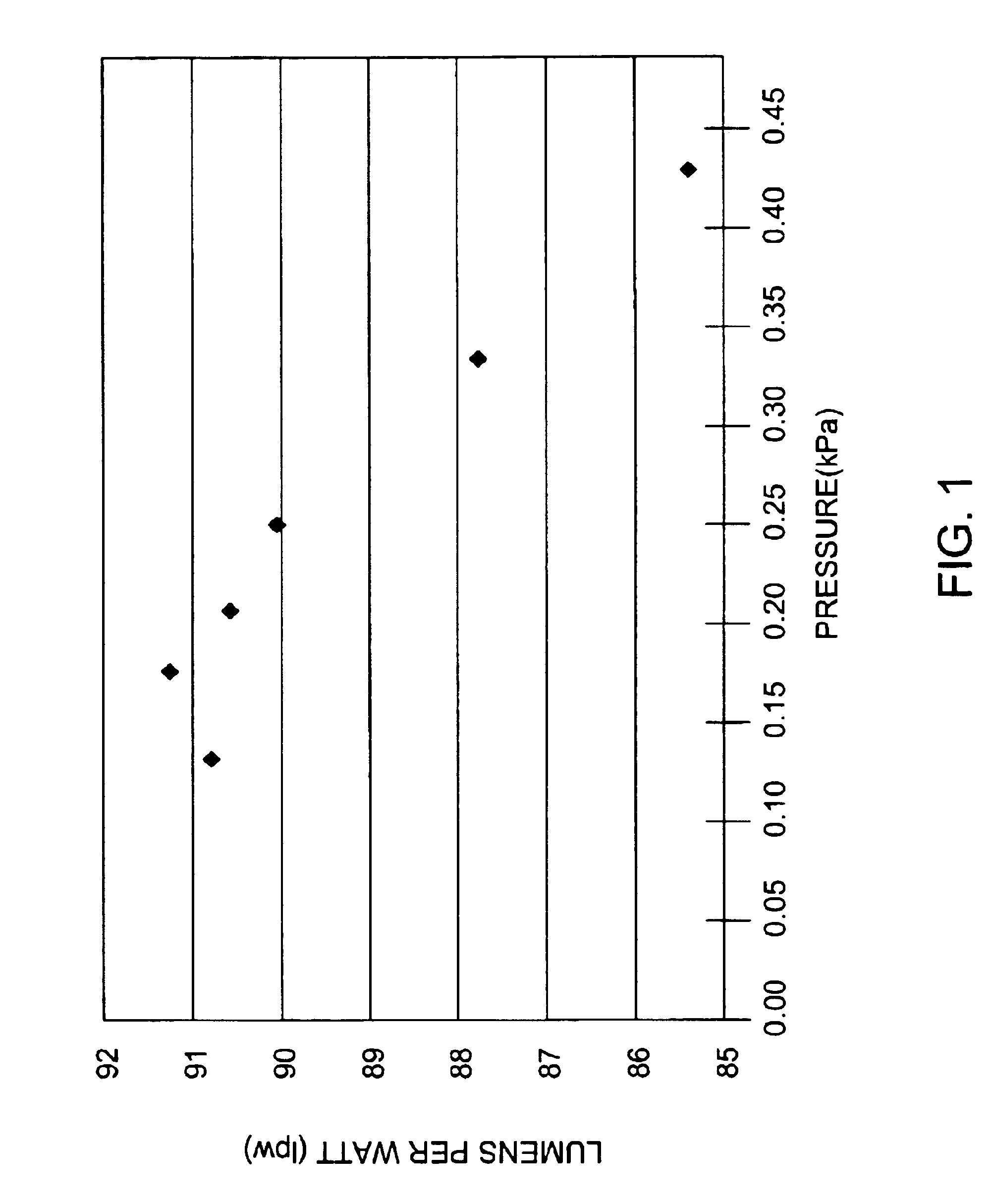Electron emitter including carbon nanotubes and its application in gas discharge devices
a carbon nanotube and emitter technology, applied in the manufacture of electric discharge tubes/lamps, electrode systems, discharge tubes luminescnet screens, etc., can solve the problems of reducing the overall energy efficiency of gas discharge devices, boiled off materials can have deleterious effects on the performance of other chemically sensitive materials, and the cathode life is limited, so as to reduce the amount of energy expended, reduce background gas pressure, and increase luminous output
- Summary
- Abstract
- Description
- Claims
- Application Information
AI Technical Summary
Benefits of technology
Problems solved by technology
Method used
Image
Examples
example
[0018]A mixture of the present invention was made with 25% (by volume) of carbon nanotubes and 75% (by volume) of a conventional alkaline-earth triple carbonate. A small amount of a temporary binder, such as a resin or a starch, may be advantageously added into the mixture. The exact quantity of the temporary binder is not critical. The mixture was deposited by spraying on a coiled cathode of a conventional T8 fluorescent lamp (General Electric Company, Cleveland, Ohio) and the alkaline-earth carbonates were converted to alkaline-earth oxides in a non-oxidizing atmosphere as is well known in the art. The coiled cathodes having the coating layer of carbon nanotubes and alkaline-earth metal oxides were installed in conventional T8 fluorescent lamps. Twenty-four such lamps were produced for testing. In addition, twenty-three T8 fluorescent lamps also were made using the conventional alkaline-earth metal oxide emission mixture without carbon nanotubes for comparative testing. Cathode fa...
PUM
| Property | Measurement | Unit |
|---|---|---|
| diameter | aaaaa | aaaaa |
| diameter | aaaaa | aaaaa |
| temperatures | aaaaa | aaaaa |
Abstract
Description
Claims
Application Information
 Login to View More
Login to View More - R&D
- Intellectual Property
- Life Sciences
- Materials
- Tech Scout
- Unparalleled Data Quality
- Higher Quality Content
- 60% Fewer Hallucinations
Browse by: Latest US Patents, China's latest patents, Technical Efficacy Thesaurus, Application Domain, Technology Topic, Popular Technical Reports.
© 2025 PatSnap. All rights reserved.Legal|Privacy policy|Modern Slavery Act Transparency Statement|Sitemap|About US| Contact US: help@patsnap.com



